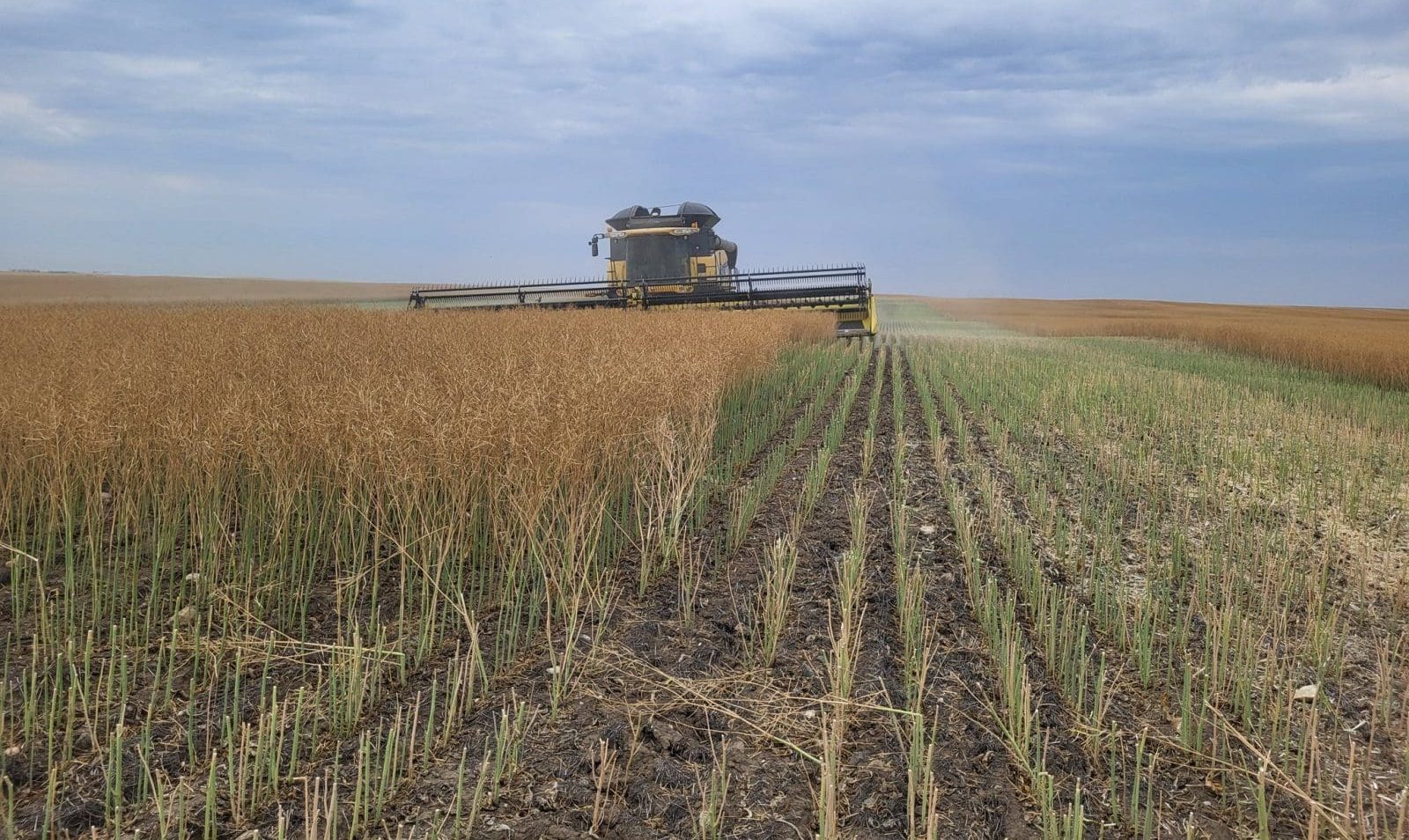
Harvesting canola in Saskatchewan in late August. Photo: Page Newton
CHINA’S Ministry of Commerce plans to launch an anti‑dumping probe into pricing of its imports of canola from Canada.
Announced this week, the probe follows Canada’s announcement late last month of a 100-percent anti‑dumping tariff on Chinese-made electric vehicles, due to come into effect on October 1.
CBA agricultural economist Dennis Voznesenski looks into what the canola tariff might do for Australian as well as Canadian canola prices.
Is the timing bad for Canadian farmers?
It depends on when the probe concludes, and consequently when tariffs are implemented. According to local sources, for now there has not been any notable evidence of Chinese buying ceasing. When China implemented anti‑dumping tariffs on Australian barley in May 2020, it only happened 18 months after the initial probe began in November 2018. If China decides to start slowing purchases immediately, it would be very bad timing for Canadian farmers. Harvest has just begun. As of the last week of August, Saskatchewan’s harvest was 8pc complete, Manitoba’s 1.2pc and Alberta 3pc.
What could the impact be on Canada if Chinese buyers stop purchasing immediately?
This year Canada is forecast to harvest 18.5‑19 million tonnes (Mt) of canola. Early harvested yields are being reported by on‑the‑ground sources roughly 10pc below initial expectations. Domestic demand this year was forecast by the USDA as 12.7Mt, leaving only 6.3Mt for export, plus 2Mt carry-over. On average between 2019 and 2023, China imported 21pc, or 1.7Mt, of Canadian canola exports. A complete and immediate cessation of Canadian canola imports would impact prices, but not as much as it would for a more export exposed country like Australia. Over the last 10 years, Canada has built up a large domestic canola-crush sector to supply canola oil for the US biofuel markets. This has made it less export exposed and vulnerable to tariff measures.
Has China targeted Canadian canola before?

Dennis Voznesenski.
China previously blocked exports from two major Canadian grain traders in 2019 following a political row which included the arrest of a Chinese national in Canada. China’s need for canola oil remained, and instead of Canadian canola moving directly to China, Canadian canola was exported to third-party countries, where it was crushed, and the oil re‑exported, including to China.
Is it good timing for China?
The targeting of Canadian canola by China at this time is questionable from a “maximum economic pain infliction” standpoint. While global canola prices have dipped in recent months, it is largely due to Northern Hemisphere harvest, as opposed to a broader long‑term oversupply. In fact, global ending stocks for the 2024-25 marketing year are expected to be the lowest since 2021. European canola production has dropped from 20Mt last year to 17.3Mt this year, and the EU is increasingly restraining the use of palm oil in biofuels, which is expected to push up canola imports notably.
What’s the impact on pricing?
Canadian ICE canola futures dipped 7.5pc in the initial hours of trading of September 3, before rebounding, and by close of business, only traded 4.3pc lower. From an Australian standpoint, the potential of Chinese tariffs on Canadian canola adds to an already bullish forecast for prices and export demand in 2024-25. In a year when canola availability is expected to be low, and Europe will be buying more Australian canola, China will have to bid up prices to substitute any potential shortfall it creates by implementing tariffs on Canadian canola.
Source: CBA Agri Commodities Weekly Alert

HAVE YOUR SAY